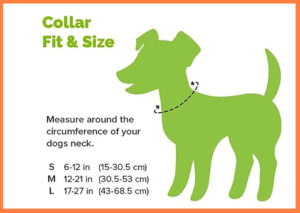When it comes to training our canine companions, many of us turn to innovative tools like shock collars to help instill discipline and foster obedience. However, with great power comes great responsibility, and one of the most critical aspects of using shock collars is determining How Tight Should a Shock Collar Be. Striking the right balance between comfort and effectiveness is essential, and in this article, we will go into considerations when fitting a shock collar for your furry friend.
For some people dogs are more than just pets, they prioritize their safety and well-being when using any training device. A shock collar that is too tight can lead to discomfort, irritation, and even physical harm, while a collar that is too loose may not provide the desired correction needed for effective training.
So, how do we find that sweet spot to ensure both effectiveness and safety?
So, join us as we embark on this journey to unlock guide optimal shock collar fitting, empowering you to become a responsible pet owner and a caring trainer.
Together, we’ll foster a stronger bond with our four-legged friends and create a harmonious environment where they can thrive and flourish. Let’s delve into the world of shock collars.
Read More: 5 Reasons not to Use a Shock Collar
How Tight Should A Shock Collar Be
The ideal tightness of a shock collar is a fine line that every pet owner should know how to walk. Ensuring proper contact with your dog’s skin is essential to deliver the right level of correction, but it should never come at the expense of your furry friend’s comfort.
As per our research, we have found a conclusion that a simple and effective way to gauge the correct tightness is by fitting one or two fingers between the collar and your dog’s skin. This ensures a snug fit that guarantees appropriate contact without causing any discomfort or harm.
When time passes, dogs grow and change over time, which means their collar fit may need adjustments. Regularly checking the collar’s tightness and making necessary changes as your dog gains or loses weight is a crucial part of responsible pet ownership.
A collar that is too loose could compromise the effectiveness of the training, while one that is too tight could lead to unnecessary discomfort or even injuries.
In addition to the right tightness, proper positioning of the collar’s contact points is equally vital. As per our research, the contact points should be centered on your dog’s neck, neither too close to the throat nor too far down the neck.
This strategic placement ensures optimal communication between the collar and your dog’s nervous system, allowing for a precise and effective response during training.

How to Measure Your Dog’s Neck For a Shock Collar
To measure your dog’s neck accurately, follow these steps:
- Use a flexible measuring tape: Obtain a soft, flexible measuring tape that can wrap comfortably around your dog’s neck.
- Position your dog: Have your dog stand or sit in a relaxed posture. This will ensure a more accurate measurement.
- Measure the base of the neck: Place the measuring tape around the base of your dog’s neck, where the collar will sit. Ensure it is snug but not too tight.
- Note down the measurement: Record the measurement in inches or centimeters for reference when selecting the appropriate collar size.
What Might Happen If The Collar Is Too Loose or Tight ?
If the shock collar is too loose, it may fail to deliver the intended correction, rendering the training ineffective. Your dog might not respond to the signals, leading to confusion and frustration for both of you.
On the other hand, if the collar is too tight, it can cause discomfort, irritation, and even physical injuries to your furry companion. A tight collar may also restrict your dog’s movement and breathing, posing serious health risks.
So To ensure the collar’s effectiveness and your dog’s well-being, find the right balance by fitting one or two fingers between the collar and your dog’s skin.
Regularly check the fit and adjust as needed to accommodate changes in your dog’s size. A properly fitted collar guarantees safe and efficient training, creating a harmonious bond between you and your canine friend.
Read More: Why Does Dog Bite on Other Dogs
Tips for Choosing the Right Size Shock Collar:
When selecting a shock collar for your dog, consider these essential tips:
- Measure accurately: Refer to the earlier section on measuring your dog’s neck to obtain the correct size.
- Check weight and material: Opt for a lightweight and durable shock collar made from comfortable materials to avoid causing discomfort to your dog.
- Consult a professional: If you’re unsure about selecting the right collar size, consult a professional dog trainer or veterinarian for guidance.

